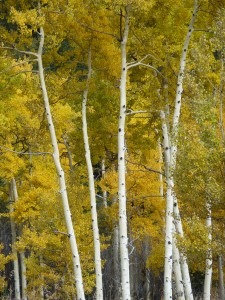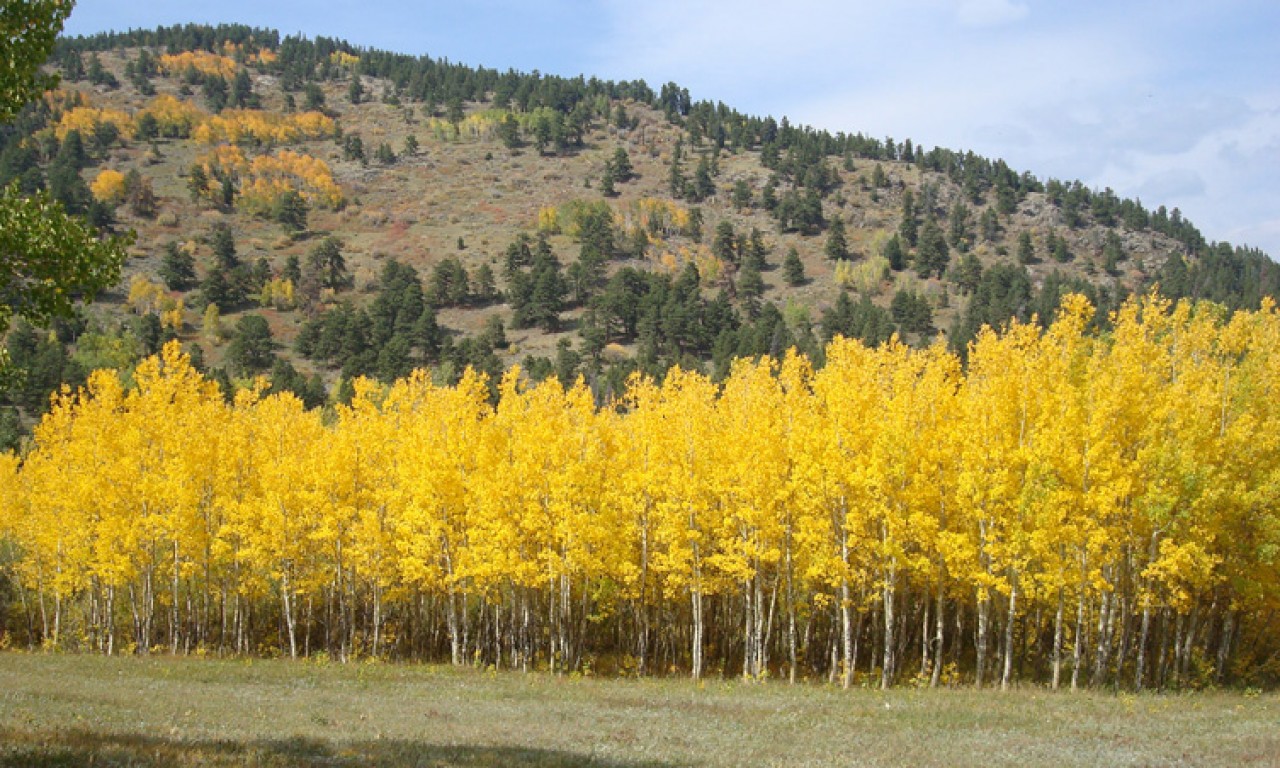Forests shimmer. Leaves tremble. Branches quiver. Aspens dance. A crisp breeze courses through the forest and the sound of delicate leaves softly tapping upon one another fills the air. These are the relaxing rustlings of golden trees during a Rocky Mountain autumn. In the last weeks of September, vibrant islands of colored aspens appear in the seas of evergreen forests. Visually striking, aspens are distinctive among Rocky Mountain tree species, not only aesthetically, but ecologically too. They add bright and beautiful texture to forests that are ever in flux.

The Latin word for quaking aspen, Populus tremuloides, means “trembling poplar.” It is recognized as one of the most widespread native tree species in all of North America. Typically growing at elevations between 7,000 and 11,000 feet, aspens are the only broadleaf tree found in mountain forests that can grow without an immediate water source such as a stream. Though they oft en grow in moist sites, aspens offer the only quavering and seasonally-colored leaves amidst evergreen, needle-bearing forests of pine, spruce and fir.
Designed to Shake
The tremble, shimmer, and quake of aspen leaves are the product of how the leaves are structured. The petiole, the stalk which attaches a leaf blade to its stem, is flat on aspen leaves, allowing the petiole to act as a pivot on which the leaves can easily move, in response to even the mildest breeze.
Aspens are also distinctive due to their soft, smooth and suede-like bark. This soft bark is quite sensitive; even the smallest scrape can cause the tree to produce prominent black scars. When the bark is left alone however, it plays an important role in the survival of the tree. Like most deciduous trees, aspens produce energy through the process of photosynthesis which occurs in their leaves. But come winter time when the leaves have fallen to the ground, aspen trees keep producing fuel. Their bark, in addition to their leaves, is capable of photosynthesizing to make the sugars they need to survive. In fact, how these trees deal seasonally with photosynthesis is a large part of what gives them so much notoriety. As winter draws ever closer and less favorable growing conditions arrive, photosynthetic activities in leaves decline and chlorophyll (which gives leaves their green color) stops being produced by the trees. With no more green pigment being produced, underlying yellow pigments are revealed and the glistening gold of the Rockies appears.
One Root System – 47,000 Trunks
The intense colors of autumn aspens capture our attention partly because the trees grow together in large groves. Aspens spread and reproduce largely through root suckering as opposed to spreading seeds. As a result, entire groves of aspens are oft en one large organism. An entire mountain hillside of aspens may contain no more than a few individual plants. In the Wasatch Mountains of Utah, one aspen clone covers 106 acres, weighs close to 6,000 tons and has around 47,000 trunks all originating from one root system!
As aspens establish themselves in an area, they give back to the earth which supports them. When the leaves turn golden in the autumn, they soon fall to the ground where they decompose and improve the quality of the soil. Over time, the presence of these trees prepares the land for the establishment of spruces, pine and firs. In the autumn air, as hillsides of umber flutter and quake, the soft tapping of aspen leaves speaks not only of the end of a season, but of renewal to come.


